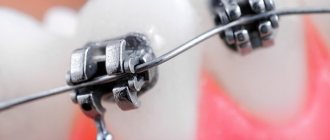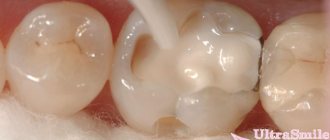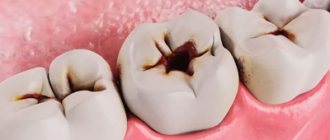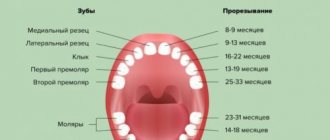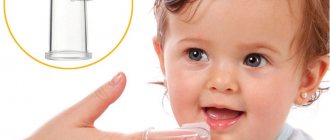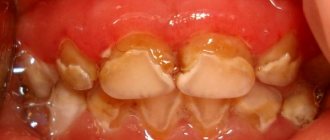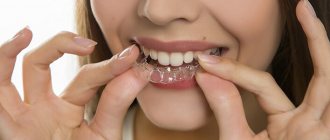Today, Tsefekon suppositories are the most convenient means of reducing high fever. Doctors advise all parents to stock up on this drug. In addition to the antipyretic effect, suppositories have analgesic properties; for this reason, doctors often prescribe this drug to young children to facilitate teething. In our article we will look at the instructions for using Tsefekon D suppositories for children.
Trade name: Tsefekon D.
Latin name: Cefecon D.
Manufacturer: Russia, JSC Nizhpharm.
Official website: www.stada.ru
Description of the drug
Antipyretic suppositories for children Tsefekon D are produced in the form of rectal suppositories. Depending on age, the drug has different dosages (50 mg, 100 mg, 250 mg).
| Release form | Composition of Tsefekon D suppositories | Photo |
50 mg – for children 1 – 3 months.
100 mg – for children 3 months. - 3 years
250 mg – for children 3-12 years old
Paracetamol is used as the active ingredient.
An additional component is the substance vitepsol. With the help of Witepsol, suppositories for children dissolve at body temperature.
Suppositories are white. Cream shade is allowed.
In what cases should it be used?
According to the annotation for this drug, Cefekon is given to a child in the following cases:
- To reduce body temperature (for acute respiratory diseases, after vaccination, for viral diseases.
- As an anesthetic drug. Cefekon is able to eliminate pain from toothache in a child, joint pain, and headache.
- Doctors often recommend this drug to relieve pain from various injuries (including burns).
Tsefekon D
Cefekon D is an antipyretic and analgesic agent in the form of suppositories for use in pediatrics. The administration of drugs into the rectum (rectal administration) has a number of advantages over the more common oral administration, and in some situations it is the only acceptable one (for vomiting, difficulty swallowing, the need for local therapeutic effects on the rectum and/or colon). In pediatrics, suppositories seem to be an indispensable dosage form, especially for the youngest children who have not yet learned to swallow a tablet or suspension on demand and are not old enough to receive injections. Aspects of rectal administration have been extensively studied by pharmacologists. Penetration of active substances into the circulatory system through the rectal mucosa through passive movement of the substance from an area of higher concentration to an area of lower concentration. The rectum is penetrated by an extensive network of capillaries and larger vessels, and therefore pharmacological substances are well absorbed from its surface. It is important that substances absorbed in the lower rectum do not pass through the liver and are not subject to metabolic transformations. Rectal administration of drugs protects the gastrointestinal mucosa from local irritation. The Russian pharmaceutical industry produces a number of medicines in the form of rectal suppositories, among which Cefekon D occupies a prominent place. The active ingredient of the drug, paracetamol, is very widely used in pediatrics.
The peak concentration of paracetamol in the blood is observed 1 hour after rectal administration (when taking the tablet form this happens faster - after 30-45 minutes). In infants, the bioavailability of the drug is higher than in older children. The severity of the antipyretic effect of paracetamol when administered into the rectum is the same as when administered “per os”. Cefekon D is effective for influenza, acute respiratory infections, pain syndromes of various origins (including headaches, inflammation of peripheral nerves, toothache, injuries, etc.). The drug can be used in children starting from 6 months of age. At an earlier age (1-3 months), a one-time dose of Cefekon D is possible to reduce the temperature after preventive vaccinations. Contraindication to the use of the drug is individual intolerance to paracetamol. The optimal time of administration is after bowel movement. If prompt administration of the drug is necessary, you can do a cleansing enema instead of waiting for a bowel movement. The dose is calculated depending on the patient's body weight according to the table given in the package insert. Duration of the drug course: no more than three days when using the drug as an antipyretic and no more than five days when using the drug as a non-narcotic analgesic. Exceeding the established duration of pharmacotherapy is possible only in agreement with the doctor.
Contraindications, side effects, overdose
Cannot be used in the following cases:
- The drug is strictly prohibited for use by young children under 1 month of age.
- Individual intolerance to active components.
- The drug is used with caution in case of low hemoglobin, neutropenia, as well as in chronic liver or kidney diseases.
Side effects
Sometimes a child develops an allergy to Cefekon suppositories, which manifests itself:
- skin itching or rash,
- redness of the anus.
Abdominal pain, vomiting and nausea are also possible. Very rarely, a child develops diarrhea from Cefekon suppositories.
Overdose
There are no official data on overdose.
Cefecon® D
Read the instructions carefully before you start using the drug. Save the instructions, you may need them again. If you have any questions, consult your doctor. The medicine you are using is intended for you personally and should not be given to others as it may cause harm to them even if they have the same symptoms as you.
If fever persists for more than 3 days and pain persists for more than 5 days, you should consult your doctor.
Paracetamol can cause serious skin reactions such as acute generalized exanthematous pustulosis, Stevens-Johnson syndrome, toxic epidermal necrolysis, which can be fatal. If a skin rash or other signs of hypersensitivity reactions appear, stop taking the drug immediately and consult a doctor!
The simultaneous use of paracetamol with other paracetamol-containing drugs should be avoided, as this may cause an overdose of paracetamol.
There is a risk of overdose in patients suffering from liver disease, chronic alcoholism, chronic malnutrition (due to low levels of glutathione reserves in hepatocytes) and in patients receiving inducers of microsomal liver enzymes.
The daily dose of paracetamol should not exceed 4 g in adult patients. For chronic liver diseases, including compensated ones, the daily dose of paracetamol should not exceed 3 g/day!
When using the drug for more than 5-7 days, peripheral blood counts and the functional state of the liver should be monitored. Paracetamol distorts laboratory results in the quantitative determination of glucose and uric acid in plasma.
Long-term use of analgesic drugs in high doses in violation of the instructions for use (especially when using several analgesics simultaneously) can lead to the development of headaches that cannot be treated with increased doses of these drugs.
Long-term use of analgesic drugs (especially combined use of several analgesics) can lead to irreversible kidney damage with the risk of developing kidney failure (analgesic nephropathy).
Abrupt withdrawal of analgesic drugs after their long-term use in high doses can lead to the development of headache, as well as fatigue, muscle pain, nervousness and autonomic symptoms. Withdrawal symptoms decrease within a few days. During this period, you should avoid the use of analgesic drugs and do not start using them without consulting a doctor.
Cefekon's analogs
This drug has a fairly large number of drugs with similar effects. Let's look at the most effective of them:
| Drug name | For what diseases is it used? | Who should not use it | At what age can it be used? | average cost |
| Nurofen | For the treatment of acute respiratory diseases, viral infections. To relieve joint pain, as well as headaches, toothaches and earaches. | If the child's weight is less than 5 kg, 1st and 3rd trimester of pregnancy, heart failure, renal failure, individual intolerance to the active substance, indigestibility of fructose. | From 3 months | 170 rubles |
| Viferon | Infectious and inflammatory diseases, hepatitis of various groups. During pregnancy, it is used to treat candidiasis, vaginosis and mycoplasmosis. | Individual intolerance to the active substance | From birth | 210 rubles |
| Efferalgan | Used to reduce high body temperature in acute respiratory diseases, viral infections, after vaccination. It is used as a pain reliever for earaches, headaches, and toothaches. | Individual intolerance to the active substance, anemia, blood diseases, age up to 1 month. | From 1 month | 105 rubles |
| Panadol | As an antipyretic for acute respiratory diseases, viral infections, and also after vaccination. Relieves pain during teething. Effective for ear pain and headaches. | Newborns, children with serious kidney or liver diseases, individual intolerance to the active substance. | From 3 months | 98 rubles |
| Paracetamol | As an antipyretic for acute respiratory diseases, viral infections, and also after vaccination. Relieves pain during teething. Effective for ear pain and headaches. | Viral hepatitis, individual intolerance to the active substance, renal or liver failure. | From 3 months | 89 rubles |
Timing of eruption of permanent teeth in children
Hurry up! Before the start of the summer holidays, there is a unique opportunity to take advantage of a 15% discount on pediatric dentistry!
Interactive dental formula
The timing of teething can characterize both the biological and passport age of the child. The process and timing of teething depend not only on inherited genetic parameters. The timing of teething can be influenced by external and internal factors (climatic conditions, diet, quality of drinking water, etc.). In this regard, the timing of the eruption of permanent teeth varies in different regions.
During a person’s life, 20 teeth change once, and the remaining 8-12 teeth do not change; they erupt initially as permanent teeth (molars).
By the age of three, all baby teeth erupt in a child, which by the age of 5 begin to gradually be replaced by permanent ones.
There are 20 primary teeth in total: on each jaw there are 4 incisors (4 central teeth), 2 canines (third teeth) and 4 molars (fourth and fifth teeth).
An adult normally has 28-32 permanent teeth: each jaw has 4 incisors, 2 canines, 4 premolars and 4-6 molars. The development of the third molar (“wisdom tooth”) may not occur at all (with congenital edentia of the third molars), which is also considered normal. Another situation is also possible: a wisdom tooth is embedded in the thickness of the jaw, but never erupts (due to incorrect position or lack of space in the jaw). This situation occurs very often.
After all the baby teeth have erupted, there are no gaps (gaps, gaps) between them, which is normal. But as the jaw grows, before the baby teeth are replaced by permanent ones, gaps should appear between the baby teeth. This process is necessary because permanent teeth are larger in size than baby teeth and if spaces are not formed, then the permanent teeth do not fit in the jaws and the child receives “crooked” permanent teeth.
In parallel with the formation of spaces between temporary teeth, the roots of baby teeth are “reabsorbed”, after which the teeth alternately become loose and fall out.
There is no general opinion about the normal timing of the eruption of permanent teeth, since scientific studies by different authors were carried out in different regions and in different years of the last and present centuries. Here are the norms for the eruption of permanent teeth according to several authors:
Central incisors 5-6 years (Vinogradova T.S. 1982) 6-8 years (Kolesov A.A. 1985) 7-8 years (Magid E.A. et al. 1987, Bykov V.L. 1998) 6- 9 years (Kalvelis D.A. 1994)
Lateral incisors 7-9 years (Vinogradova T.S. 1982) 8-9 years (Kolesov A.A. 1985, Magid E.A. et al. 1987, Bykov V.L. 1998) 7-10 years (Kalvelis D .A. 1994)
Fangs 12-13 years (Vinogradova T.S. 1982, Bykov V.L. 1998) 9-11 years (Kolesov A.A.1985) 10-13 years (Magid E.A. et al. 1987) 9-14 years (Kalvelis D.A. 1994)
First premolars 9-11 years (Vinogradova T.S. 1982, Bykov V.L. 1998) 9-10 years (Kolesov A.A. 1985, Magid E.A. et al. 1987) 9-13 years (Kalvelis D .A. 1994)
Second premolars 9-11 years (Vinogradova T.S. 1982) 11-12 years (Kolesov A.A. 1985, Magid E.A. et al. 1987, Bykov V.L. 1998) 10-14 years (Kalvelis D .A. 1994)
First molars 4.5 -7 years (Vinogradova T.S. 1982) 6 years (Kolesov A.A.1985) 5-6 years (Magid E.A. et al. 1987) 5-8 years (Kalvelis D.A. . 1994) 6-7 years (Bykov V.L. 1998)
Second molars 12-13 years (Vinogradova T.S. 1982, Kolesov A.A. 1985, Magid E.A. et al. 1987, Bykov V.L. 1998) 11-14 years (Kalvelis D.A. 1994)
Third molars (“wisdom teeth”) 18-25 years (Magid E.A. et al. 1987) 18-20 years (Kalvelis D.A. 1994) 18-30 years (Bykov V.L. 1998)
Here is the most common sequence of eruption of permanent teeth:
- First molars ("sixth teeth")
- Central incisors
- Lateral incisors
- First premolars ("fourth teeth")
- Canines (“eye teeth”) and/or second premolars (“fifth teeth”)
- Second molars ("seventh teeth")
- Third molars ("wisdom teeth")
Important! Each baby tooth is normally loosened and replaced with a permanent one.
Central primary incisor on the permanent one of the same name
Lateral primary incisor on the permanent one of the same name
Milk canine to permanent canine of the same name
First primary molar to first permanent premolar ("fourth tooth")
Second primary molar to second permanent premolar ("fifth tooth")
First permanent molar ("sixth tooth")
appears immediately permanent at 5-7 years.
Second permanent molar ("seventh tooth")
appears immediately permanent at 9-12 years of age.
Therefore, even if your child has not lost a single milk tooth at the age of 5-7 years, this does not mean that he does not have permanent molars (“sixth teeth”). The appearance of these teeth is not always accompanied by fever and general malaise.
Also, do not despair and panic if a child aged 5-7 years has a fever and is not eating well, perhaps his first molars are cutting!
A.I. Rarely dentist
2013

